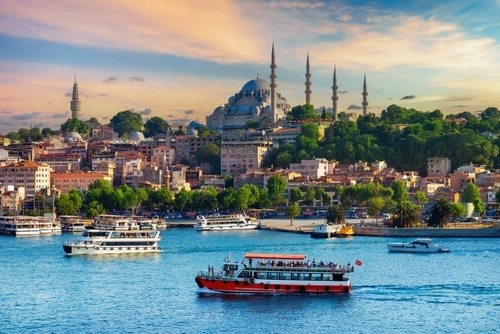Mie Travel Guide
Mie Tourist Attractions
Mie Featured Food Experiences
Mie Featured Restaurants
Japanese Restaurant Hamayu (Shima Kanko Hotel)
Approximately 36% of Mie Prefecture’s land has been designated Natural Parks, and are protected by the government. Ise-Shima National Park is one of the most popular, housing the Ise Jingu Shrine, located on the coast facing the Pacific Ocean. The rugged coast and little islands dotting the horizon make it a beautiful sight come sunset. The Ise Jingu Shrine (Ise Grand Shrine) is one of the most famous attractions of Mie, dedicated to the goddess Amaterasu, built in the 3rd century. Many consider it Japan’s most sacred shrine.
One of the most unique of Mie Prefecture’s festivals is the ancient Tado Ageuma “Horse Jumping Festival,” which has over 1,000 years of history and started as a method of predicting the result of the upcoming harvest. The Ishidori Matsuri is another festival which was declared an Intangible Culture of Mie Prefecture, and some say it is Japan’s loudest festival. Mie also hosts a Ninja Fest every year and is home to the Ninja Museum of Igaryu, located by the Iga Ueno Castle.
As Mie Prefecture is located alongside two seas, their fishing industry has access to a variety of species of fish, making it a paradise for sushi and sashimi lovers. In particular, Tsu, the capital city of Mie prefecture once had the highest consumption of grilled eel in Japan, which is regarded as a summertime delicacy in Japan. Aside from the abundance of seafood, Mie prefecture is also renowned for its Matsusaka wagyu beef, which has less brand name recognition than the famous Kobe beef but is arguably even more highly regarded (not to mention more expensive). As for produce, they are known for their mikan, grapes, strawberries, and pears.
What to eat in Mie?
One of the advantages of being near the sea is fresh seafood. Tekone-zushi is one Mie specialty that showcases the bounty of the surrounding waters. It is a filling meal that consists of vinegared sushi rice with fish such as skipjack tuna on top. For dessert, a popular local snack is akafuku mochi, a rice cake wrapped with smooth red bean paste.
What are the best things to do in Mie?
Futami Okitama Shrine is a unique attraction in Mie. It is iconic for its “Wedded Rocks” -- two rocks in the ocean, one large and one small, connected with a shimenawa rope which marks the land features as sacred. Another shrine to visit is Ise Jingu (Ise Grand Shrine), the “Soul of Japan” which houses 125 shrines. Ise Jingu is considered as one of the holiest shinto shrines as it is said to hold the Sacred Mirror.
Where are the famous festivals in Mie?
Mie is known for its various historic festivals that happen throughout the year. Kuwana Ishidori Festival, held on the first Saturday of August, is known as Japan’s noisiest festival due to the loud gongs and drums. Later in August, the Kumano Fireworks Display launches from ships offshore in celebration of the Obon Festival.
What is Mie famous for?
Mie is famous for its Natural Parks, with over 35% of the prefecture’s land being designated with the title. These parks include cultural destinations such as Ise-Shima and Yoshino-Kumano National Parks. The sunsets at Mie are extravagant, with clear coastlines and vast mountain ranges in the distance.
What to buy in Mie?
Mie is the perfect place to buy pearl jewelry as well-known company, Mikimoto (the first in the world to cultivate pearls) is located in the area. On Mikimoto Pearl Island, you might even be able to catch a glimpse of the famous Ama (female pearl divers).
Sign up for insider tips & sneak peeks into the diverse world of dining in Japan
 Tokyo
Tokyo Osaka
Osaka Kyoto
Kyoto Hyogo
Hyogo Hokkaido
Hokkaido Nara
Nara Fukuoka
Fukuoka Hiroshima
Hiroshima Kanagawa
Kanagawa Ishikawa
Ishikawa Florence
Florence Paris
Paris Rome
Rome Porto
Porto Barcelona
Barcelona New York
New York Venice
Venice Madrid
Madrid Marrakesh
Marrakesh Istanbul
Istanbul

